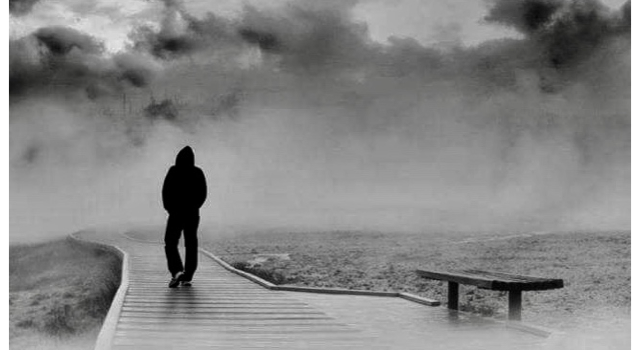The BBC has been accused by more than 100 of its staff of giving Israel…

Old China Had The World’s Biggest Drug Problem.
Before Mao’s revolution won, in 1949, the people of China were miserably poor, ruled by a handful of rich landowners, warlords and foreign capitalists.
There were 70 million junkies in China, addicted to opium, morphine and heroin.
The people of old China suffered terribly from this drug addiction.
Many poor people used their pennies on the pipe instead of food.
Addicts often abandoned their children or even sold their children to buy more drugs.
Addicted women were often forced to become prostitutes and many died of diseases.
Drugs were forced on China by the rich colonialists of Europe and America.
The British Government even waged the famous Opium War in 1839 to force China to accept opium brought on English ships.
Malcolm X wrote, “Imagine! Declare war upon someone who objects to being narcotised!”
This drug trade started because big capitalists could make fortunes selling addictive drugs, and because colonialist governments needed that trade to finance their takeover of China itself.
Corrupt Chinese officials profited too, by helping the foreign capitalists enslave the people.
This is similar to the way the U.S. ruling class helped create today’s worldwide plague of drug addiction.
The U.S. ruling class is tied into the drug traffic at all levels.
They often organise it, finance it and defend it.
In the 1960s, the CIA flooded heroin into oppressed communities to pay for their secret war in Laos.
Then, in Reagan’s 1980s, the CIA expanded cocaine traffic to finance their secret war against Nicaragua.
U.S. drug companies make profit off speed and downers which are sold in both legal and illegal ways.
The official connection goes down to the street level, where cops demand their ‘cut’ of drug profits.
In China, the Maoist revolution ended drug addiction quickly.
Mao’s revolutionary armies defeated the oppressors’ armies in 1949.
Three years later, in 1952, there were no more addicts, no more pushers, no more opium poppies grown, and no more drugs smuggled in.
In only three short years China went from 70 million drug addicts to none.
In the United States today, ending drug addiction seems impossible.
The system claims to be ‘fighting drugs’, with cops, new medications, religion, new therapies, and ‘just say no’ campaigns.
But despite all of this the drug problem won’t go away, while armed police enforcers harass and brutalise the people.
The production, transportation and sale of drugs is a multi-billion dollar business.
It is run by big-time capitalists who have ties throughout the U.S. government, the CIA and the police.
Meanwhile, the top rulers of this system blame the people for the ‘drug problem’, especially poor ghetto youth.
( C. Clark Kissinger )
Israeli-Illegally-Occupied Golan Heights In Syria.
The Israeli military stormed a camp for displaced Syrians near the boundary line between the 70% of the Golan Heights illegally-occupied by Israel and the rest of Syria.
The al-Shahaar refugee camp is located near Jabata al-Khashab, a Syrian town in the Quneitra province.
Jabata al-Khashab, a nearby town, is located within the boundary lines of the United Nations-monitored “buffer zone” between the Israeli-illegally-occupied portion of the Golan and the rest of the area.
After instructing the camp’s residents to leave, the Israeli army also destroyed their tents.
Israeli airstrikes in Syria have consistently targeted Syrian government forces or fighters from Hezbollah, the Lebanese militia and political party fighting along side the Syrian army.
An estimated 20,000 Syrian Arabs – the vast majority of whom come from the Druze religious sect – live under Israeli-illegal occupation in a handful of villages in the Golan Heights.
They live alongside some 21,000 illegal-Israeli settlers who live in dozens of Jewish-only colonies in contravention of international law.
( Patrick Strickland, 20.07.2015 ) .. electronicintifida.net
Drug Use In Victorian Britain.
Today it is hard to believe, but in early and mid-Victorian Britain it was possible to walk into a chemist’s shop and buy without prescription laudanum, cocaine, and even arsenic.
Opium preparations were also sold freely in towns on market stalls and in the countryside by travelling hawkers.
Until 1868, the sale of drugs was practically unrestricted, and they could be bought like any other commodity.
During the Industrial Revolution drug use in England grew rampant, particularly among the working classes.
Drugs were brought to Britain from every corner of the expanding British Empire and the amount of opium sale was particularly staggering.
Dangerous drugs were commonly used for making home remedies and less frequently as a recreation for the bored and alienated people.
The recreational use of opiates was popular particularly with pre-Victorian and Victorian artists and writers.
There was no moral condemnation of the use of opiates and their use was not regarded as addiction but rather as a habit in the Victorian period.
However, when in the 1860s, ‘Dark England’ with its opium dens in London’s East End was described in popular press and books, various individuals and religious organisations began to campaign against unrestricted opium trafficking.
In 1868, the Pharmacy Act recognised dangerous drugs and limited their sale to registered chemists and pharmacists, but until the end of the nineteenth century few doctors and scientists warned about the dangers of drug addiction.
The trade in opium to China was begun by the Portuguese and the Dutch as early as the seventeenth century, but it did not attain major proportions until after the British had taken Bengal in 1757.
By 1830, the British had become the major drug-traffickers in the world.
The British Empire supported opium trafficking to China, which was an enormous market.
The Opium Act of 1878 strengthened the role of opium as a cornerstone of the British imperial economic policy in the Far East.
At the beginning of the nineteenth century, as a result of the expanding British Empire, opium also became available in Britain and soon it was as popular as alcohol.
However, the bulk of opium imports to Britain came not from India but from Turkey.
Turkish opium, noted for its strength and high quality, usually provided between 80 and 90% of Britain’s total import of the drug, only losing some of its preeminence in the late seventies and eighties when the Persian variety was more widely imported.
Opium and opium derivatives were widely recognised in Victorian Britain as a ‘cure all’ and the range of opiate preparations on the market was enormous.
( Dr Andrzej and D. Litt )
Cannabis-Crazed Killers.
Why do our politicians and media talk so much drivel about Islam?
We react like superstitious peasants to anything connected with this religion.
As a result, we completely miss the point of what is going on.
For example, we imagine that the horrible killings by cannabis-crazed drifters, of Lee Rigby here and of Nathan Cirillo in Canada, are evidence of some vast secret Islamist conspiracy masterminded from a cave by a robed villain with a beard.
This is partly because a long and expensive international PR campaign has fooled a willing elite (many of them drug abusers themselves) into believing that cannabis is safe when in fact it is one of the most dangerous drugs there is.
So we shut our minds to all the evidence of the terrible harm it can do – even highly publicised killings by cannabis abusers.
It is also because our politicians are even more useless abroad than they are at home.
Here, they try to persuade us that they alone, armed with surveillance and huge police powers, stand between us and a terrorist peril that is a far smaller threat to life than the motor car.
( Peter Hitchens, 26.10.2014 )
Israeli Forces Shoot And Kill Unarmed Palestinian Civilians In The Illegally-Occupied West Bank.
Falah Abu Maria, 52, was fatally shot during a house raid in Beit Ommar, a Hebron-area village in the southern West Bank.
After breaking into the family home, a large squad of Israeli soldiers forced Ahmad, Falah’s eldest son, to identify his siblings for them.
Upon saying his 22-year-old brother Muhammad’s name, a soldier shot Muhammad in the pelvis.
Alarmed at seeing Muhammad shot, Ahmad and his father tried to defend him from the soldiers who began firing indiscriminately.
One of the soldiers pointed his rifle at Falah and shot him four times in the neck and chest as he attempted to help his son.
Muhammad Alawneh, 22, died in hospital shortly after being shot in the chest by Israeli Border Police in Burqin, a village near Jenin in the northern illegally-occupied West Bank.
Israel occupation officials claimed he was picking up a stone to throw at the heavily-armed soldiers during protests against an armed Israeli incursion into the village.
Though an Israeli military spokesperson said that the killing is being investigated, such probes almost never find soldiers culpable for killing Palestinians.
An Israeli colonel shot dead Muhammad al-Kasbeh, 17, near the Qalandiya checkpoint between illegally-occupied East Jerusalem and the rest of the West Bank.
Although Israel initially claimed that the colonel fired his weapon because he was facing “mortal danger,” those claims were debunked by a video and medical evidence that al-Kasbeh was shot in the back as he attempted to flee after throwing a single stone at an Israeli military vehicle.
Palestinian, Israeli and international human rights watchdogs regularly decry Israel’s widespread human rights violations in areas across the illegally-occupied West Bank, including East Jerusalem, and the Gaza Strip.
Israeli soldiers and settlers who attack or kill Palestinians enjoy systematic impunity.
Among those given a free pass last year were the soldiers who lay in ambush and then killed 14-year-old Yousef al-Shawamreh in the village of Deir al-Asal al-Fawqa in March 2014.
( Patrick Strickland, 24.07.2015 ) .. electronicintifada.net
The Death Merchants Of The Tobacco Industry.
A bad week for the death merchants of the tobacco industry.
A poorly two-year-old boy found asleep in a smoke-filled house was taken into care from his fag-addicted parents.
Judge Louise Pemberton ruled the risks of leaving him there were “far too high”.
That story followed two surveys.
One showed that child health has improved dramatically since the ban on smoking in public places began in 2007.
And that 11,000 kids have been spared the ordeal of going into hospital as admissions for chest infections and other respiratory problems dropped sharply.
The second showed that 430,000 children have been tipped into poverty in the UK by their parents spending £50 a week on cigarettes.
But the writing is on the wall – in Mandarin.
China, where a million die of smoking-related diseases every year, has banned lighting up indoors and on public transport in Beijing.
If the ever-puffing Chinese can stop, anybody can.
( Paul Routledge, 05.06.2015 )



This Post Has 0 Comments